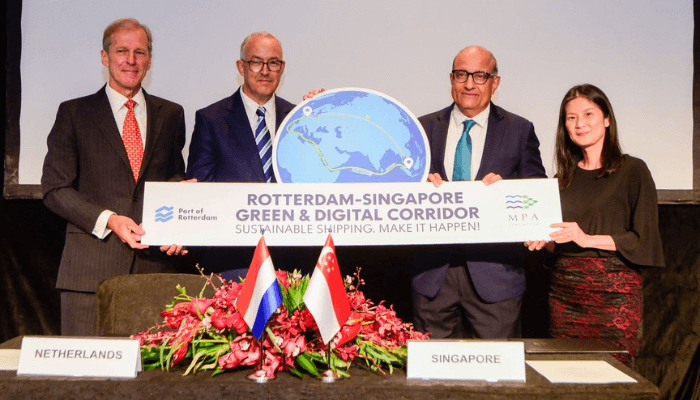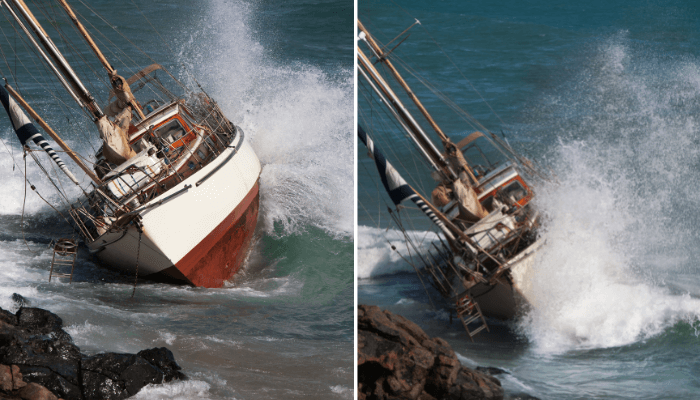A decline that shippers were seeing in ocean spot rates and in premium surcharges across many trade routes as demand for containers softened has reversed, with congestion at ports and at sea increasing container spot prices for the U.S./Europe trade route and creating a floor in spot rates for the Asia to East Coast shipments.
An ocean spot rate is a one-time price a shipper can lock in for a specific shipment without a long-term contract. Ocean spot rate pricing trends flow through to the broader economy, as retailers have passed on container prices to the consumer during the pandemic, and it is been among inflationary pressures as the Federal Reserve tries to tamp down demand.
A recent decrease in demand which had led spot prices to decline was the result of manufacturing orders being cut due to changes in consumer spending behavior. But now the situation is changing again as the trade routes experiencing congestion are seeing container rates moving higher.
“Global shippers should be prepared for volatility in the coming quarters,” said Peter Sand, chief shipping analyst at ocean and air freight research firm Xeneta. “I think patience is required, not only in terms of understanding how market dynamics constantly develop, but certainly also to realize that no two markets are alike.”
Container congestion creates a false lack of available containers, and push up prices, as CNBC has reported. The longer a container is at rest, not moving loaded or unloaded, takes that container out of the supply for future use. When container availability is diminished, freight rates increase.
Numerous port labor strikes and rail disruptions in Europe have bogged down the movement of containers at German ports, and that contagion is moving into the U.K. The congestion created by the labor slowdowns and strikes have constricted Hamburg’s container availability and the CNBC Supply Chain Heat Map for Europe has flipped from yellow to red.
Container pricing for the China to the U.S. East Coast route is back up to $10,000 as more vessels arrive and congestion grows.
Container wait times at the Port of Oakland have soared to 26.5 days after the trucker protests that shut down the terminals.
“The recent protest disruptions at the Oakland Seaport which halted operations for several days are having an impact. It could take weeks to sort everything out. This will likely cause further cargo delays,” said Bryan Brandes, maritime director at the Port of Oakland.
The halt in operations will also impact the pace of loaded U.S. agriculture exports. The port reported a 4.2% decline in loaded U.S. exports for the month of June as a result of ocean carriers omitting the port as a way to make up for time lost to congestion at the ports of Los Angeles and Long Beach.
Traditional peak season in ocean shipping starts in the month of August. The current backlog of containers at the ports will only increase congestion and add wait time for incoming vessels.
According to a report from Everstream Analytics, “On the U.S. East Coast, congestion at the Port of Savannah continues to be very high with average waiting times climbing to 7.5 days, up 123% compared to the previous quarter. Vessel counts increased from last week to 18 on average. The Port of New York-New Jersey saw waiting times decrease slightly to 1.8 days on average with 10 vessels waiting at anchor.”
Savannah has publicly stated that trade to its port has been boosted by West Coast labor talks and delayed access to rail at West Coast ports, prompting a significant shift in vessel calls. Savannah is also receiving container trade diverted from the Port of Charleston.
“GPA [Georgia Ports Authority] is currently handling the highest volume of ad hoc and new service vessels the Port of Savannah has experienced to date,” it said in a release. “Uncertainty around the labor talks, unprecedented and unplanned vessel calls, record cargo volume, and vessel diversions to Savannah have contributed to a higher than normal number of vessels waiting at anchor.”
What remains to be seen is how strong the peak season will be. Future bookings tracked by FreightWaves show the total container volume from all ports in China to all ports in the U.S is down, reflecting a slowdown in consumer spending. Big swings in the recent past were a result of China’s Covid lockdowns or slowdowns, but slowing demand has supplanted that story.
While the decrease in orders in theory should create an availability of containers, that is not happening because of the congestion, which is tying up supply.
The other factor which will limit container availability is blank (or canceled) sailings. Ocean carriers remove sailings to keep a schedule. But the cut in vessels moving restricts the amount of space available for containers to be loaded. This sets a floor on container prices and can increase spot rates as well.
Blank sailings of five or higher from China indicate a loss of capacity that starts to tighten the availability of space on vessels. “If we use as a quick rule of thumb that there are 50 vessel sailings per week, that means you have 200 a month. So when you look at Shanghai and you have 25 canceled sailings, that takes out roughly 12 percent of the available sailings,” a logistics manager explained to CNBC.
“The mounting delays at USA ports being experienced by carriers is leading to vessels returning to Asia out of position to fill their next scheduled inbound sailing,” said OL-USA CEO Alan Baer. “This will lead to a reduction of available capacity due to increased blank sailings, and ultimately higher transportation costs. Reduced volume may initially help to mute the upward price pressure, however, if we see volume increase the availability of space will tighten quickly.”
Source: CNBC











